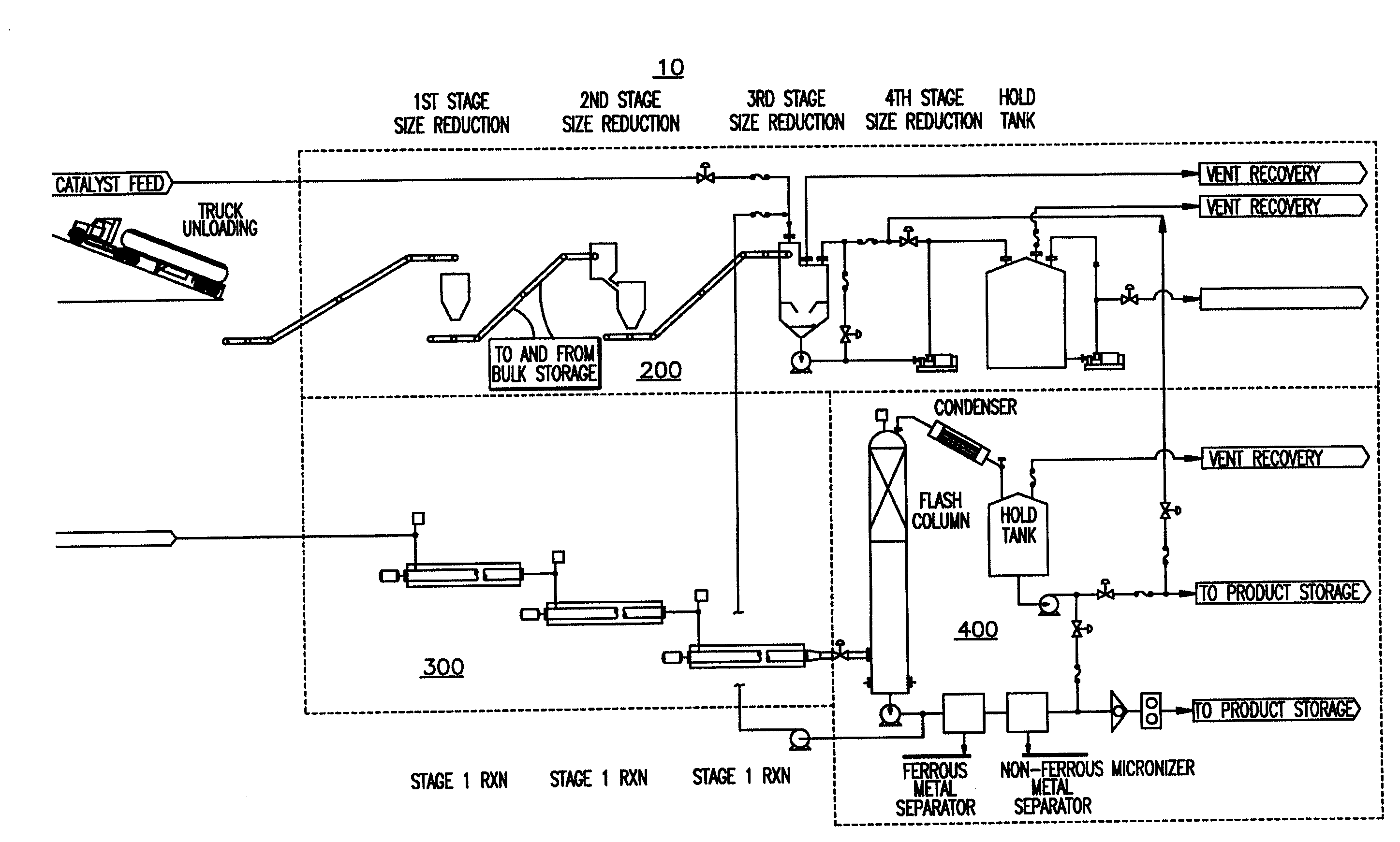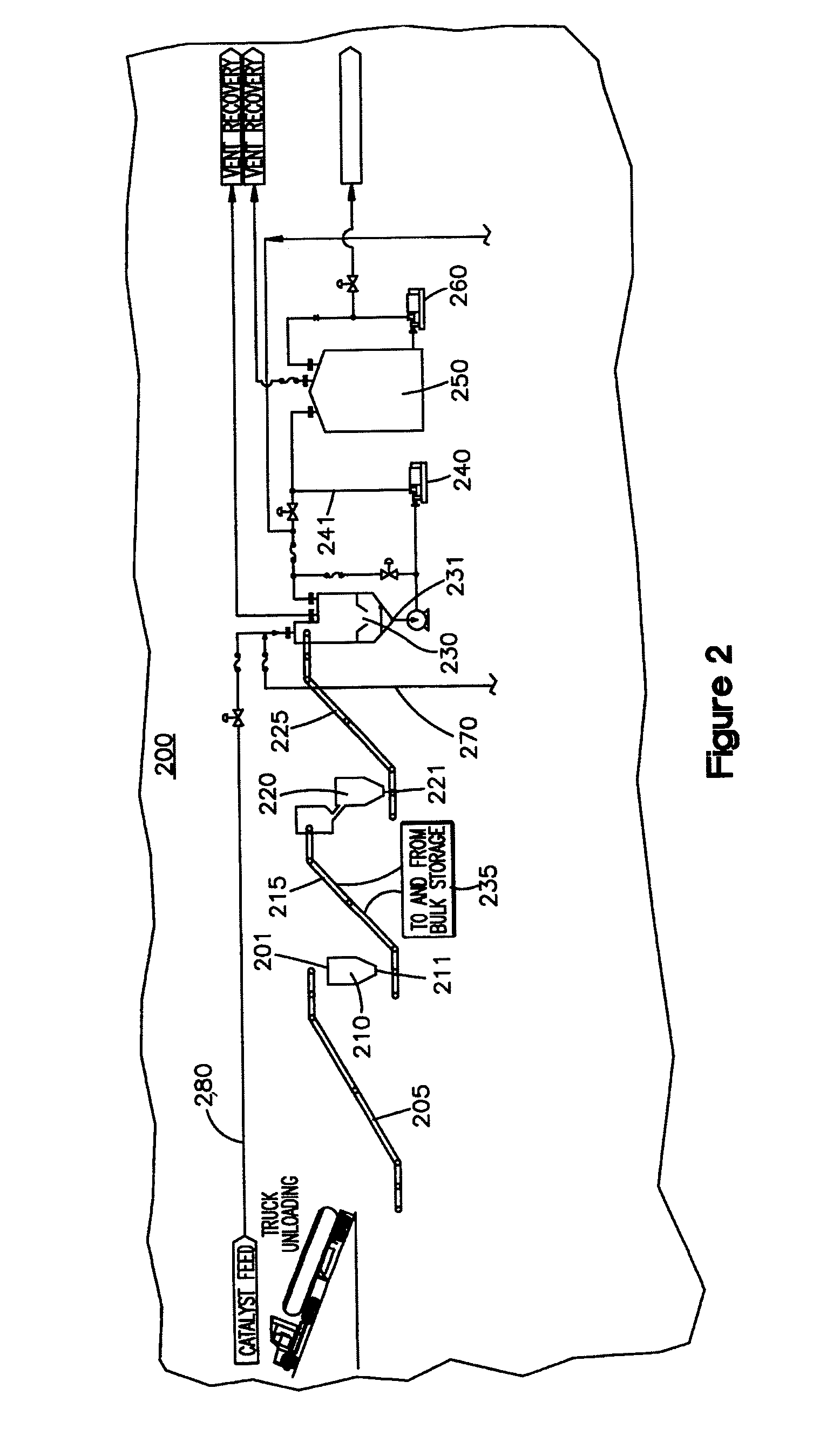System for the production of synthetic fuels
- Summary
- Abstract
- Description
- Claims
- Application Information
AI Technical Summary
Benefits of technology
Problems solved by technology
Method used
Image
Examples
example i
[0081]
Feedstock75 g (30% wood, 30% hay, 15% switch grass,25% styrene / butadiene polymeric plastic)Feedstock particle sizeMoisture content15%Initiator25 g of iron (Fe)Initiator particle sizeSolvent75 g of a mixture of organic liquids (alkanesof carbon number C5 to C2l)Reaction temperature700-800° F. (370-425° C.)Reaction duration3-20 minutesProduct:95% C3 to C21 molecules, 5% carbon number58.25 ggreater than 21
example ii
[0082]
Feedstock100 g of pure wood celluloseFeedstock particle size500 microns or lessMoisture content20%Imitator10 g of copper (Cu) and 10 g of zinc (Zn)Initiator particle sizeSolvent100 g of diesel fuelReaction temperature600° F. (315° C.)Reaction duration10 minutesProduct:93% C6 to Cl2 alkanes and alkanols, 7% Cl2 to50.22 gC21 alkanes and alkanols
example iii
[0083]
Feedstock100 g of hayFeedstock particle sizeMoisture content7%Imitator5 g of platinum (Pt)Initiator particle sizeSolvent100 g of combined liquid products of Example Iand Example IIReaction temperature850° F. (455° C.)Reaction duration15 minutesProduct:94% C6 to Cl2 alkanes and alkanols, 6% Cl2 to56.58 gC18 alkanes and alkanols
[0084]The above examples show the variety of feedstocks that can be used in the system to produce different synthetic fuels in accordance with the invention. The type of synthetic fuel produced can be controlled by the type of initiator used as well as reaction conditions such as those within third reactor (330). It is understood that in first reactor (310) and second reactor (320), the feedstock is substantially liquefied by breaking intermolecular and intramolecular bonds using increased temperature and the reaction between the water and metal catalyst initiators. Feedstock is broken into short chain hydrocarbon moieties, ready to combine with others an...
PUM
 Login to View More
Login to View More Abstract
Description
Claims
Application Information
 Login to View More
Login to View More - R&D
- Intellectual Property
- Life Sciences
- Materials
- Tech Scout
- Unparalleled Data Quality
- Higher Quality Content
- 60% Fewer Hallucinations
Browse by: Latest US Patents, China's latest patents, Technical Efficacy Thesaurus, Application Domain, Technology Topic, Popular Technical Reports.
© 2025 PatSnap. All rights reserved.Legal|Privacy policy|Modern Slavery Act Transparency Statement|Sitemap|About US| Contact US: help@patsnap.com



